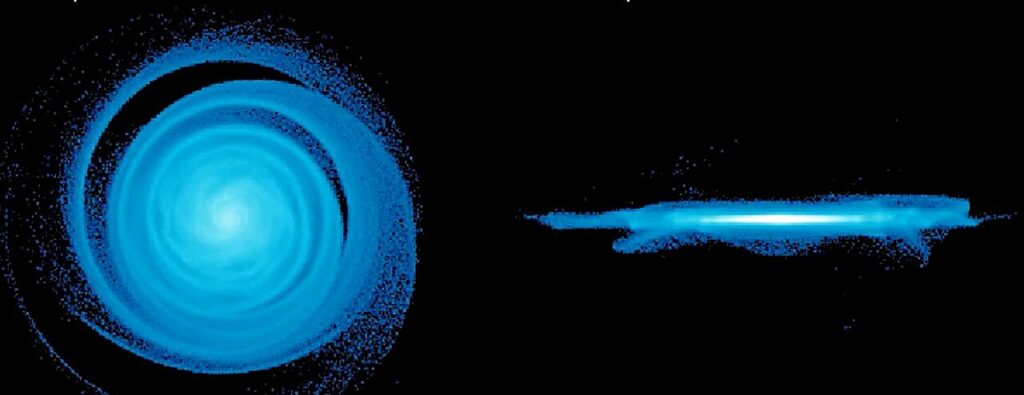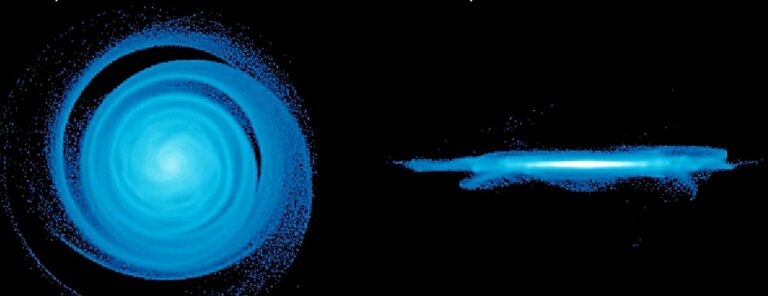Astronomers Identify Seismic Ripples in Ancient Galactic Disk
A recent image capturing an ancient and distant galaxy may provide valuable insights into its formation, shedding light on the origins of our Milky Way. Dubbed BRI 1335-0417, this spiral galaxy surpasses 12 billion years in age, making it the oldest and farthest-known spiral galaxy in the universe.
Dr. Takafumi Tsukui, the lead author, emphasized that the advanced capabilities of the ALMA telescope enabled a more detailed examination of this ancient galaxy. The primary focus of the investigation was understanding the dynamics of gas inflow and circulation within the galaxy.”Our specific interest lay in comprehending the movement of gas within and across the galaxy,” explained Dr. Tsukui.
“As gas plays a pivotal role in star formation, observing its behavior offers crucial insights into how a galaxy actively facilitates the process of generating stars.”

Because BRI 1335-0417 is located at a considerable distance from Earth, the light emanating from it requires a substantial amount of time to travel and reach our planet. The celestial observations through a telescope in the contemporary era provide a glimpse into the early stages of this galaxy, a period when the universe was merely 10% of its current age.
Associate Professor Emily Wisnioski, a co-author of the study, highlighted that early galaxies, including BRI 1335-0417, exhibit a significantly accelerated rate of star formation compared to their modern counterparts, even though they share a similar mass with our Milky Way.
In her words, “Despite its mass being comparable to that of the Milky Way, BRI 1335-0417 undergoes star formation at a rate several hundred times faster.”The researchers aimed to comprehend the mechanisms by which gas is supplied to sustain such an intense pace of star formation.
Notably, spiral structures, a rarity in the early universe, present an additional layer of mystery regarding their formation, and this study provides essential insights into the most plausible scenarios.Recognizing the limitations of directly observing the galaxy’s evolution due to the nature of snapshot observations, Wisnioski emphasized the pivotal role of computer simulations in reconstructing the narrative of the galaxy’s story. These simulations serve as a valuable tool in bridging the observational gaps and enhancing our understanding of the complex processes shaping galaxies in the early universe.
This article is republished from PhysORG under a Creative Commons license. Read the original article.
Do not forget to share your opinion with us to provide you with the best posts !




0 Comments